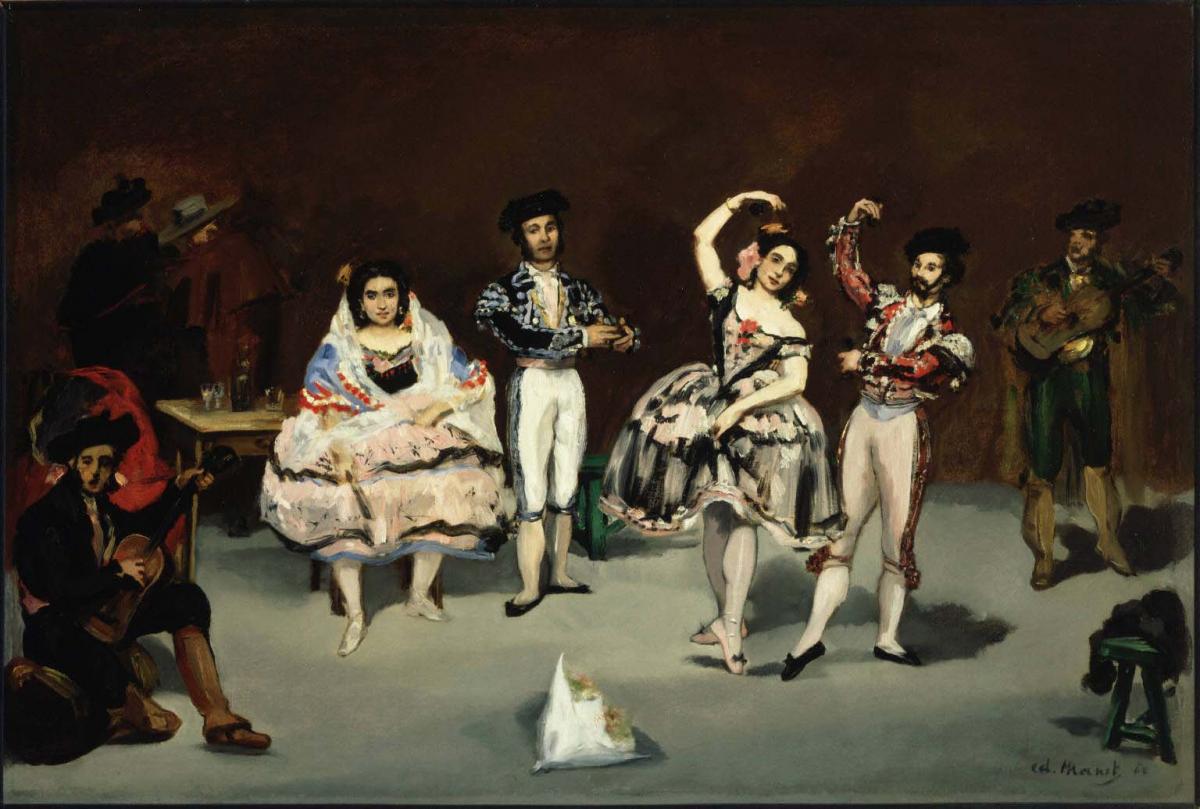Spanish Ballet
Edouard Manet ( 1862 )

The Spanish Ballet reflects the fascination with Spanish art and culture manifest in Edouard Manet’s work in the late 1850s and throughout the 1860s. His exploration of these romantic stereotypes reflected the exotic allure of things Spanish that had been popular in France as far back as the 1830s. In 1862 Manet fell under the spell of a troupe of Spanish dancers from the Royal Theater of Madrid, headed by the veteran and principal dancer Don Mariano Camprubi, who had first excited Paris audiences in 1834 dancing the bolero. Camprubi’s company had a successful season at the Paris Hippodrome from August to November 1862, sharing the bill with a group of equestrians. During that period Manet arranged for several of the principal dancers in the troupe to pose for him at the studio of his friend Alfred Stevens. A number of paintings of Spanish themes and entertainers stem from tis arrangement , including this painting which shows the principal dancers of the Royal Theater of Madrid on stage, as if in a performance.
Duncan Phillips’s enthusiasm for this work was born of his recognition that Manet was one of the pivotal sources of modern art. Phillips was particularly interested in the early Manet, and he responded stongly to the romantic and expressionistic qualities of Spanish Ballet, as well as to its bold step toward abstraction. Phillips delighted in the painting’s unexpected color accents and linear patterning, its “reduced modeling , arbitrary lighting,” and its “frieze of figures in one plane.”